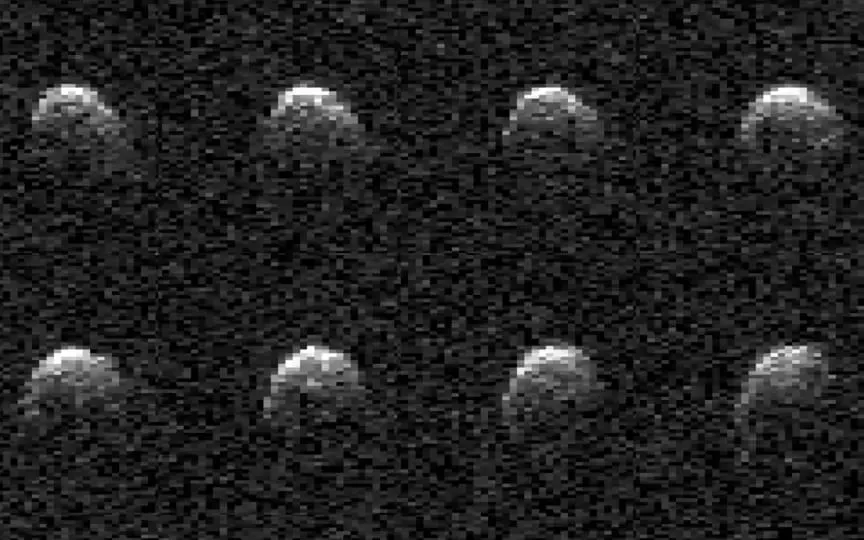NASA’s Deep Space Network captures image of Potentially Hazardous Asteroid as it flies past Earth
NASA has released radar images of a stadium-sized asteroid, named 2008 OS7, as it flew by Earth on February 2. The images were captured using NASA’s Deep Space Network radar system, providing a unique view of this celestial object.
Asteroid 2008 OS7 captured by NASA
The slow-rotating asteroid, which is 650 to 1,640 feet across, posed no threat to Earth as it passed by at a safe distance of about 1.8 million miles (2.9 million kilometers), according to a NASA report. This distance is more than seven times greater than the gap between our planet and the Moon, ensuring that there was no reason to worry about any possible effects. NASA said this asteroid was the size of a stadium! NASA’s Center for Near-Earth Object Studies (CNEOS) declared it a Potentially Hazardous Asteroid (PHA). This means that its massive size and close approach distance could potentially threaten Earth and cause catastrophic damage if it were to collide.
How was it found?
OS7 was originally discovered on July 30, 2009 by the NASA-funded Catalina Sky Survey, and was identified during routine near-Earth object search missions. Analysis of the light reflected by the asteroid provided valuable insights into its size, which was estimated to be 200-500 meters wide with a rotation period of about 29 and a half hours.
However, recent radar images from NASA’s Jet Propulsion Laboratory revealed fascinating details about the characteristics of the asteroid’s surface. Using the powerful 70-meter Goldstone Solar System radar antenna at the Deep Space Network’s facility near Barstow, the researchers observed a combination of rounded and angular regions on the asteroid’s surface. Additionally, these radar observations showed that 2008 OS7 was smaller than originally estimated, highlighting the importance of accurate measurements in understanding the properties of near-Earth objects.
NASA’s ongoing efforts to study asteroids and other celestial bodies play a critical role in improving our understanding of the dynamics and potential hazards of the solar system. Utilizing advanced radar technology and observation capabilities, scientists continue to unravel the mysteries of the cosmos while ensuring the safety of our planet.




